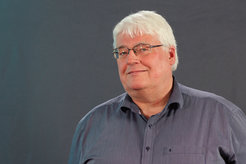Prof. Dr. Burkhard Dünweg

Burkhard Dünweg has a background in theoretical physics, in particular computational statistical mechanics. He obtained his diploma in 1987, his PhD in 1991, and his "Habilitation" in 2000 (all University of Mainz, Germany, where he was appointed Adjunct Professor in 2008). Since 1996 he works as a Group Leader at the Theory Group. External stays include his postdoc time 1991-1993, Center for Simulational Physics, Athens, Georgia, USA (funded by the Humboldt Foundation), an interim professorship in Saarbrücken, 2005, and an interim professorship in Darmstadt (2014-15). Since 2010, he is a Professor at the Department of Chemical Engineering of Monash University, within the framework of a Guest Professorship (2010-2016) and an Adjunct Professorship (since then). This also involves a longstanding research collaboration with scientists in Melbourne, in particular with R. Jagadeeshan from Monash University. From 2004-2013 Burkhard Dünweg worked as an Associate Editor for Physical Review E (polymer physics, computational physics). In 2010 he was appointed director of the SMSM (statistical mechanics and soft matter) CECAM node. Since 2013, he acts as the Ombudsperson of the institute.
Research Interests
Computer simulation methods
Burkhard Dünweg has a strong interest in simulation methods and has made innovative contributions to the study of soft-matter systems. These include the invention of a dissipative coupling scheme to simulate a particle system interacting with a Lattice Boltzmann background to provide hydrodynamic interactions, a deepened and refined understanding of thermal fluctuations in Lattice Boltzmann, and the construction of a field-based local solver for the nonlinear Poisson-Boltzmann equation. In the future, he plans to explore the strengths and weaknesses of Smoothed Particle Hydrodynamics in the soft-matter context.
Dynamics of Soft Matter
Here the phenomenon of hydrodynamic interactions is in the center of interest. Systems under investigation include semidilute polymer solutions, plus charged and uncharged colloidal dispersions driven by fields or flows. Currently we attempt to find a deepened understanding for the unmixing dynamics of polymers falling out of solution, which is governed by an intricate interplay of hydrodynamics, interface tension, and viscoelasticity.
